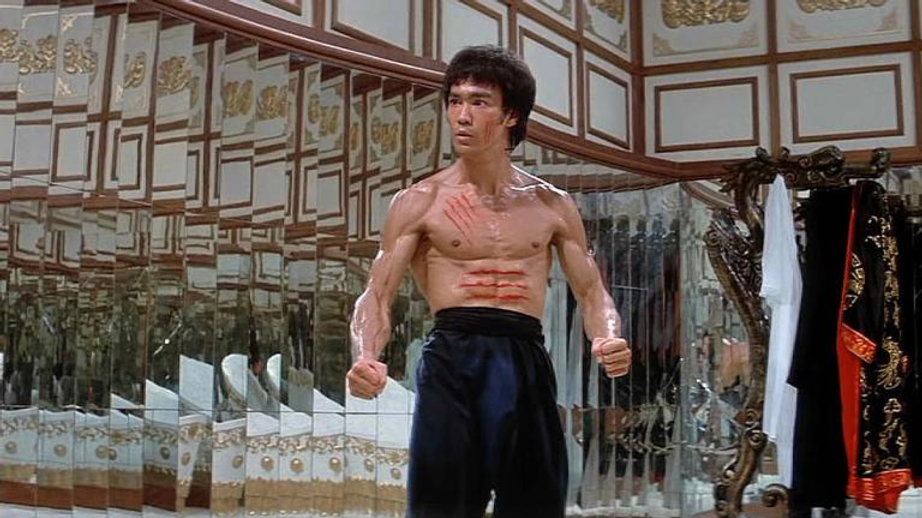
know. I was almost ready to join the Iga ninja clan.
Suffice it to say, the only time I wore this outfit and brandished a weapon that bends before breaking was once or twice, especially on October 31st. After spending Halloween as a “ninja,” I spent the following October as a street-fighting karate master with ripped sleeves and a dark alter ego. At that time, people around him called him “Ryu”.
Moral of the story: When I was a kid, I used to dress up for Halloween. And more importantly, the martial arts we train impact more than life in the martial arts studio. Right now, pop culture is paying attention to what we do in the dojo with interest. The story of martial arts has been intertwined with countless books, television shows, performances, and conversations.
history repeats

If you go to present-day Henan Province in China, many Martial arts academies and teachers are capitalizing on the Shaolin-centered kung fu craze, performing spectacular choreography and demonstrations in front of crowds. Turn on the television in America and it doesn't take long to see martial arts-inspired fight choreography performed by stunt performers who have studied arts such as Jeet Kune Do and Balintawak.
However, neither of these are unique to modern times.
Whether it's the story of Nai Khanom Thom defeating Burma's strongest martial artist or Mas Oyama's battle with more than 50 bulls throughout his life, the public always gets to see and hear the fruits of martial arts mastery. I have indulged. The superhuman legends and stories of old are just the archaic equivalent of the stories told in modern times.
In fact, if you look at history books, Countless A story of martial arts that kills with a single chop, defeats many attackers without a scratch, and destroys the fighting spirit of the enemy with just a glance. It doesn't matter whether these explanations are true or not. Whether fact or fiction, they serve an important purpose. Enrich your training with inspiration.
When you hear stories of amazing courage and strength, those qualities often come up in you. This happens even more when the story involves local people from your hometown or country, in addition to a strong belief in local pride and training. This is especially powerful when promoting your art to the public, or at least preventing it from becoming obsolete.
If a new student sees Cobra Kai and is inspired to start training, and later becomes an experienced teacher, they are actively promoting your art. If the student ends up becoming a professional martial artist, it will help emphasize the application of your art.
Movies like Bruce Lee, Jackie Chan, and the Shaw Brothers have all inspired generations of aspiring martial artists. After watching the lightning warriors defeat all the enemies around them with ease, it's hard not to be satisfied with what helped them reach that level.
Society's expectations are that adults can also be certified bad guys. and Children can find a local Mr. Miyagi who will teach them all the skills needed for life and survival. Basically, no matter your age or person, martial arts has something to offer.

Mainstream martial arts: What the public sees

As with many things, when the pop culture spotlight shines on the art you love, good and bad can happen.
Pop culture and martial arts have always had a symbiotic relationship. The public's attention has always been fascinated by the beauty of martial arts techniques, and the spread of martial arts has often benefited from public attention and interest.
Conversely, the “mainstream” nature of something that is gaining in popularity can lead to opinions being formed prematurely. When the public spotlight shines brightly on a subject, those that are not in the foreground fade from public memory. Karate became typecast as a martial art for children with ADHD, Taekwondo became almost associated with sports, and Kung Fu became known for its flamboyant movements and poetic names.
The infiltration of martial arts in pop culture can be seen in both subtle and overt ways. Of course, the Kung Fu movie genre, which grew out of Peking Opera and its play Kung Fu, is the most obvious expression of this relationship. Beyond that, the influence of martial arts can also be seen in the way martial arts and samurai films influenced blockbusters like Spaghetti Westerns and Star Wars.
For example, Seven Samurai (1960) is a western that replaces swords with guns and is a remake of Akira Kurosawa's Seven Samurai, one of the most popular samurai films. George Lucas, the creator of Star Wars, was primarily inspired by Kendo and the idea of “Ki.''
Martial arts legends have not disappeared, they have simply been presented to the public as new skins. Bruce Lee, Billy Jack, Power Rangers, and even the modern Cobra Kai series are similar in many ways to older stories told about martial arts masters such as Gu Lu Chan, Wong Fei-hong, and Mas Oyama. They serve as entertainment and inspiration for people. They even teach the masses to begin and improve their martial arts training.
From the Shaolin Temple to the Cobra Kai Dojo, these stories have motivated many to take the first steps toward self-mastery.

